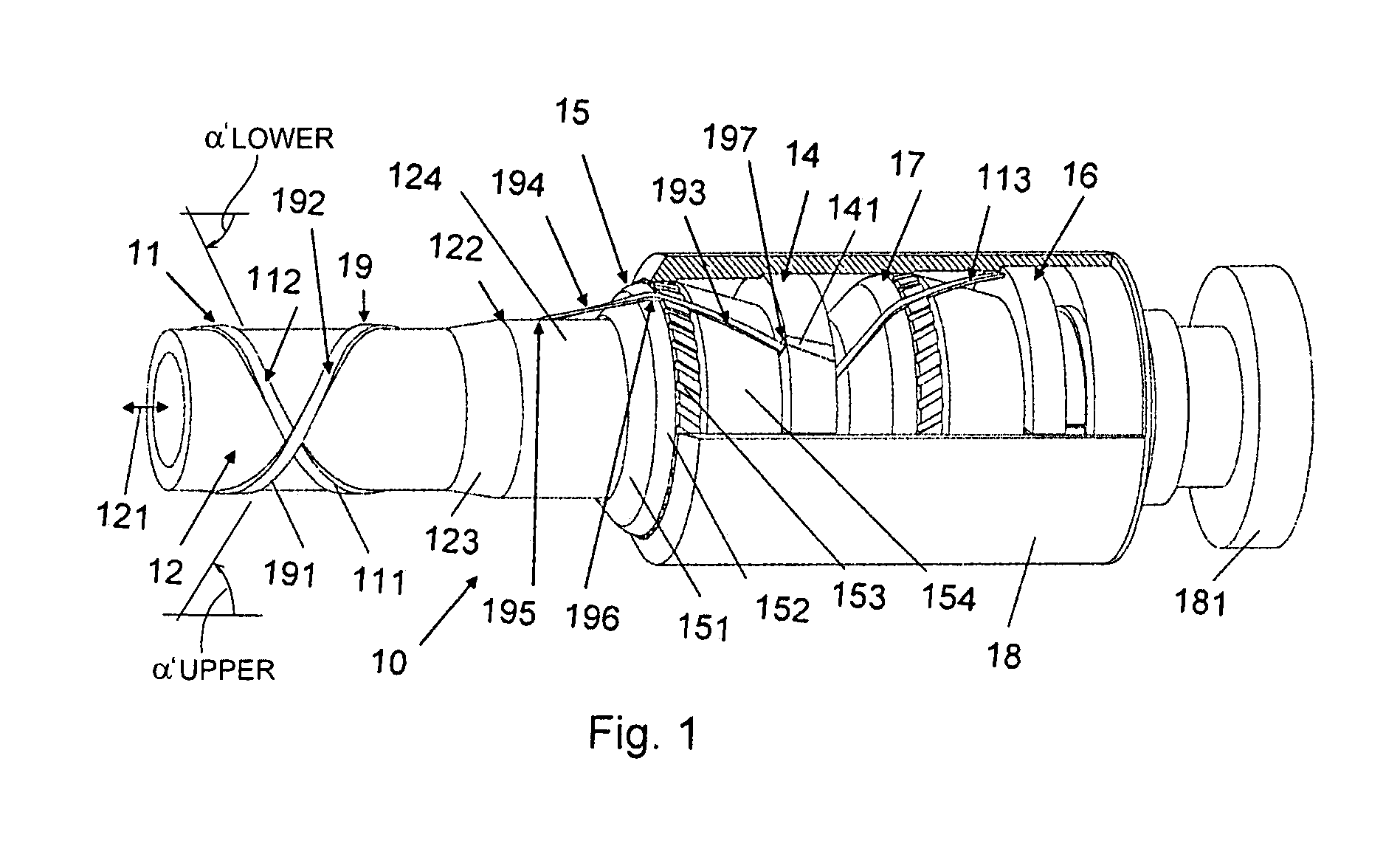Flexible pipe connected to an end fitting
a flexible pipe and end fitting technology, applied in the direction of flexible pipes, hose connections, pipes, etc., can solve the problems of limiting the problem of the structure flexibility transition, and reducing the load bearing capacity of the element, so as to avoid substantial bending of individual armouring wires and simplify the mounting of the flexible pipe
- Summary
- Abstract
- Description
- Claims
- Application Information
AI Technical Summary
Benefits of technology
Problems solved by technology
Method used
Image
Examples
Embodiment Construction
[0097]FIG. 1 shows a pipe structure according to the invention wherein an open end of a flexible pipe is connected to an end fitting, the flexible pipe comprising armouring wires that are locked to the end fitting in anchoring elements thereby fixing the flexible pipe to the end fitting.
[0098]The pipe structure 10 (comprising a flexible pipe and an end fitting) comprises two armouring layers, a lower armouring layer 11 and an upper armouring layer 19, each comprising a helically wound armouring wire (111 and 191, respectively). For clarity, only one armouring wire of each layer is shown in the drawing. It should be noted that the armouring wires 111 and 191 may represent examples of a multitude of armouring wires constituting the lower and upper armouring layer, respectively. It should further be noted that the parts 193, 113 (see later) of the armouring wires of the upper and lower armouring layer, respectively, may not originate from (be part of) the same physical wire as is indic...
PUM
| Property | Measurement | Unit |
|---|---|---|
| winding angles | aaaaa | aaaaa |
| winding angles | aaaaa | aaaaa |
| great angle | aaaaa | aaaaa |
Abstract
Description
Claims
Application Information
 Login to View More
Login to View More - R&D
- Intellectual Property
- Life Sciences
- Materials
- Tech Scout
- Unparalleled Data Quality
- Higher Quality Content
- 60% Fewer Hallucinations
Browse by: Latest US Patents, China's latest patents, Technical Efficacy Thesaurus, Application Domain, Technology Topic, Popular Technical Reports.
© 2025 PatSnap. All rights reserved.Legal|Privacy policy|Modern Slavery Act Transparency Statement|Sitemap|About US| Contact US: help@patsnap.com



